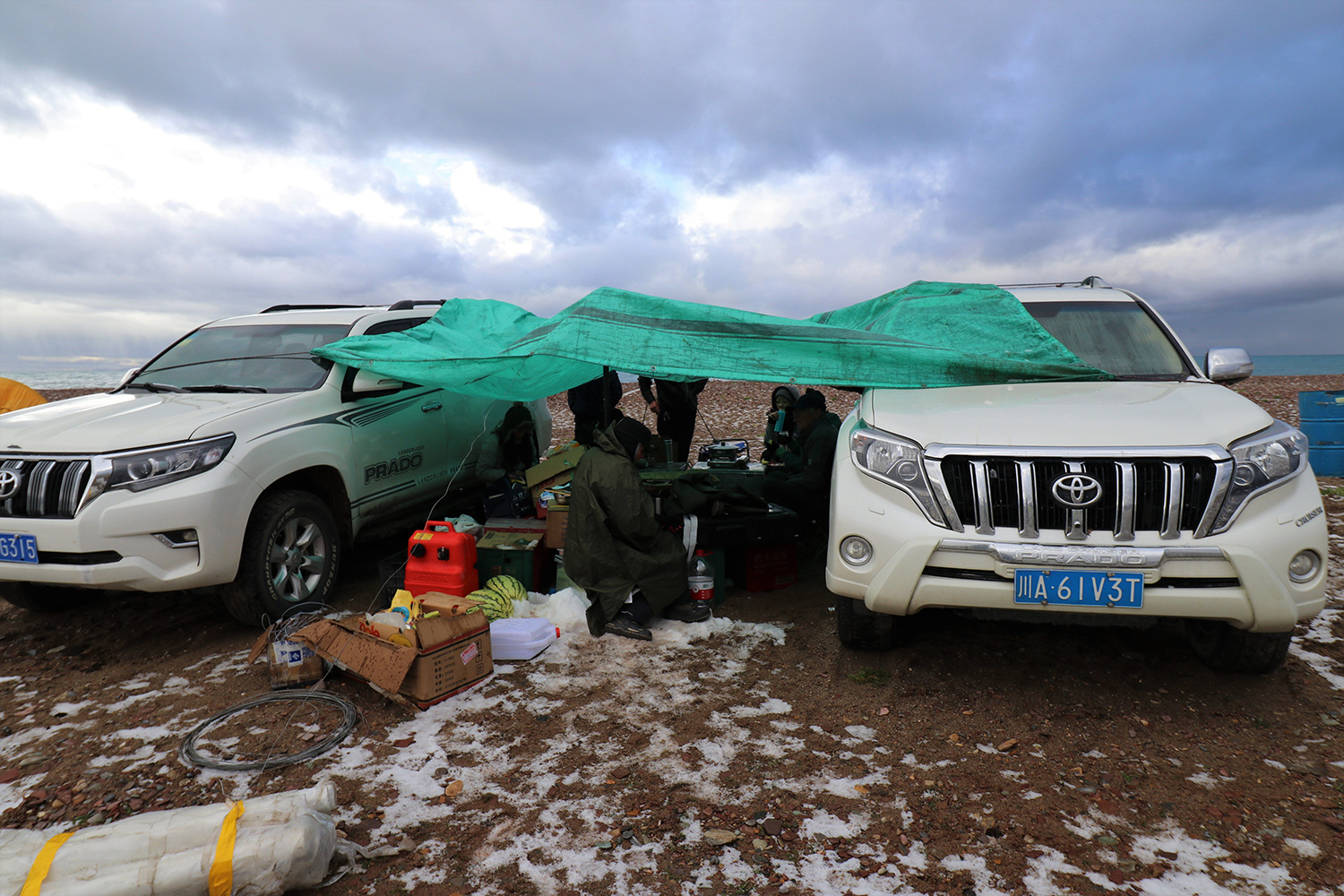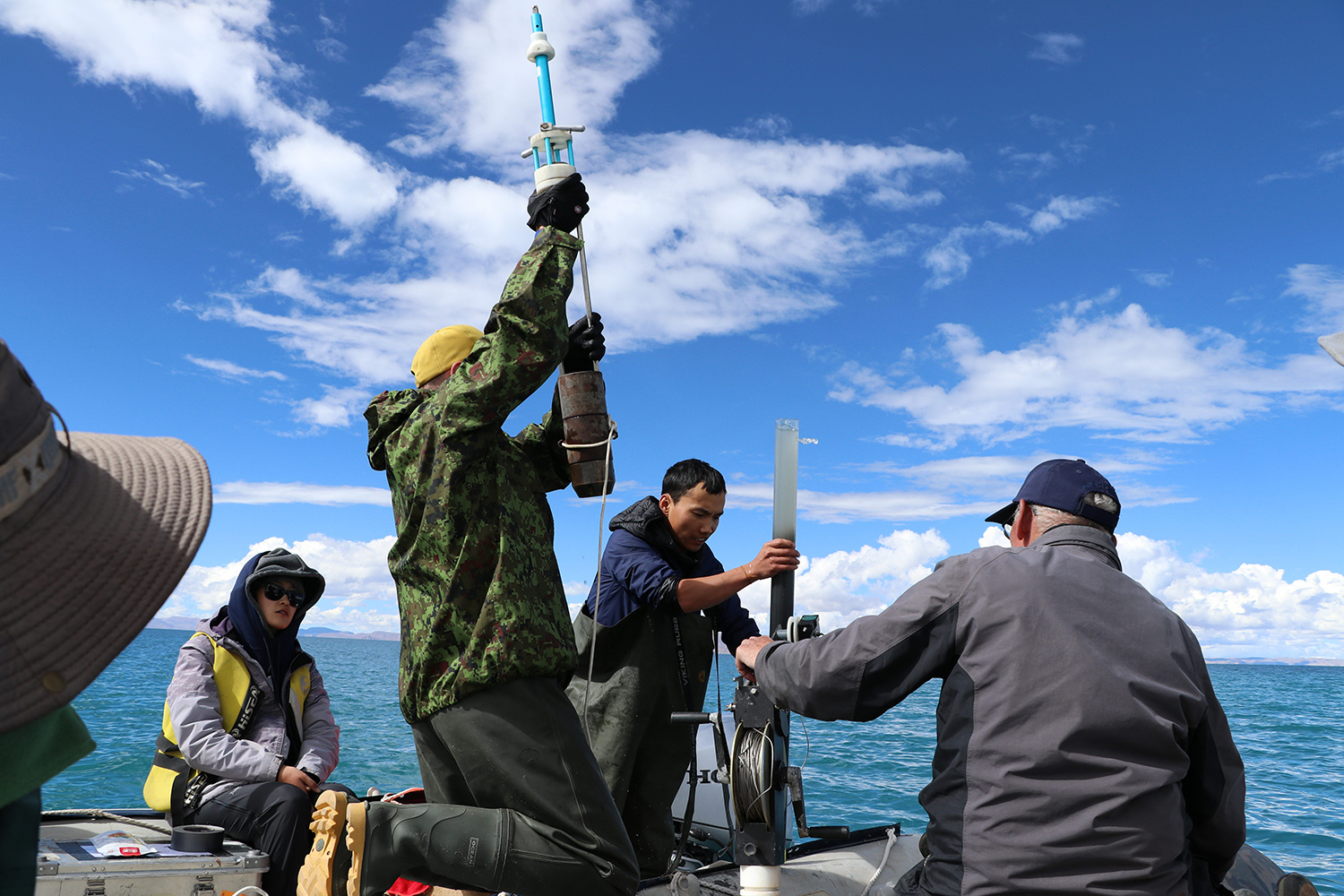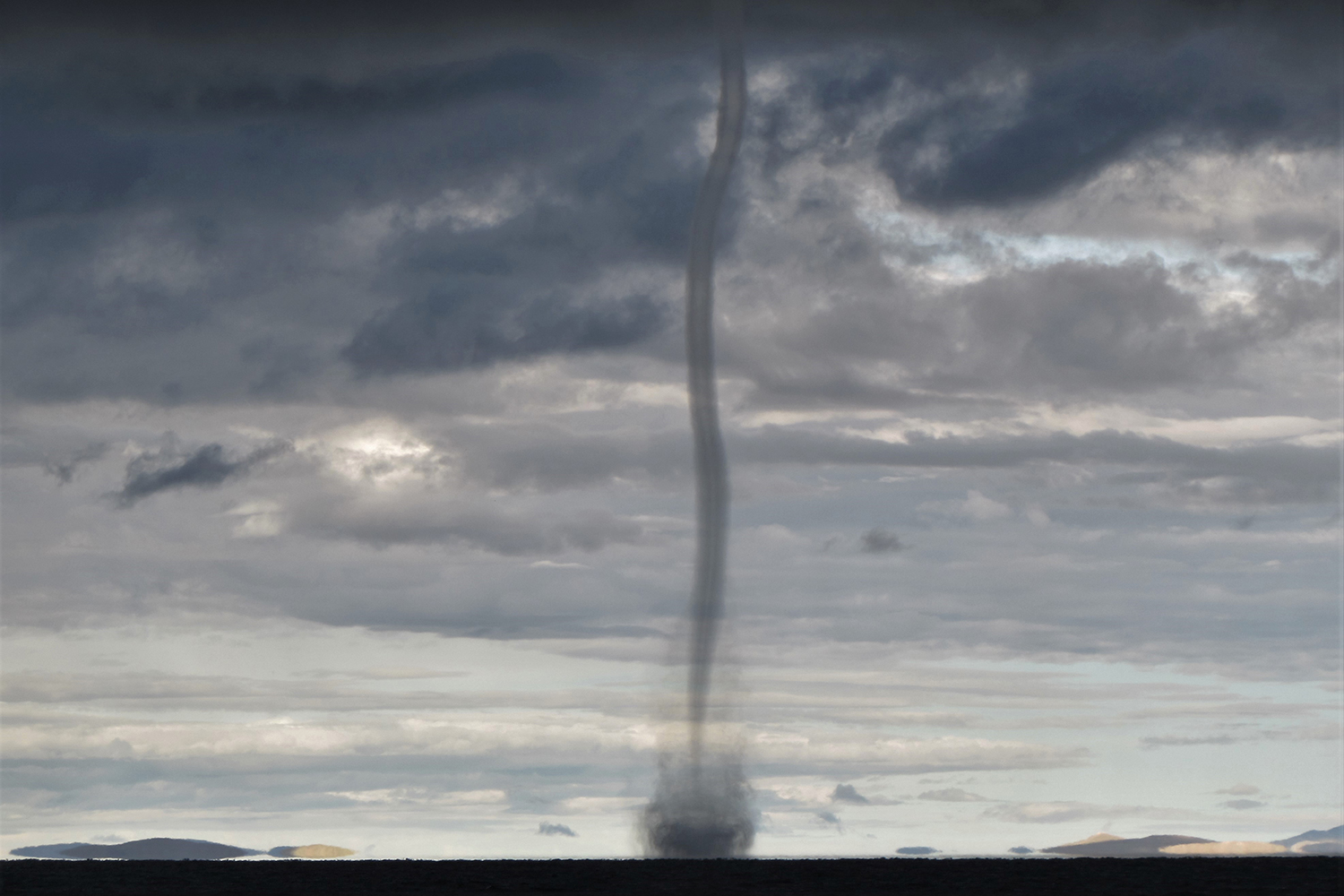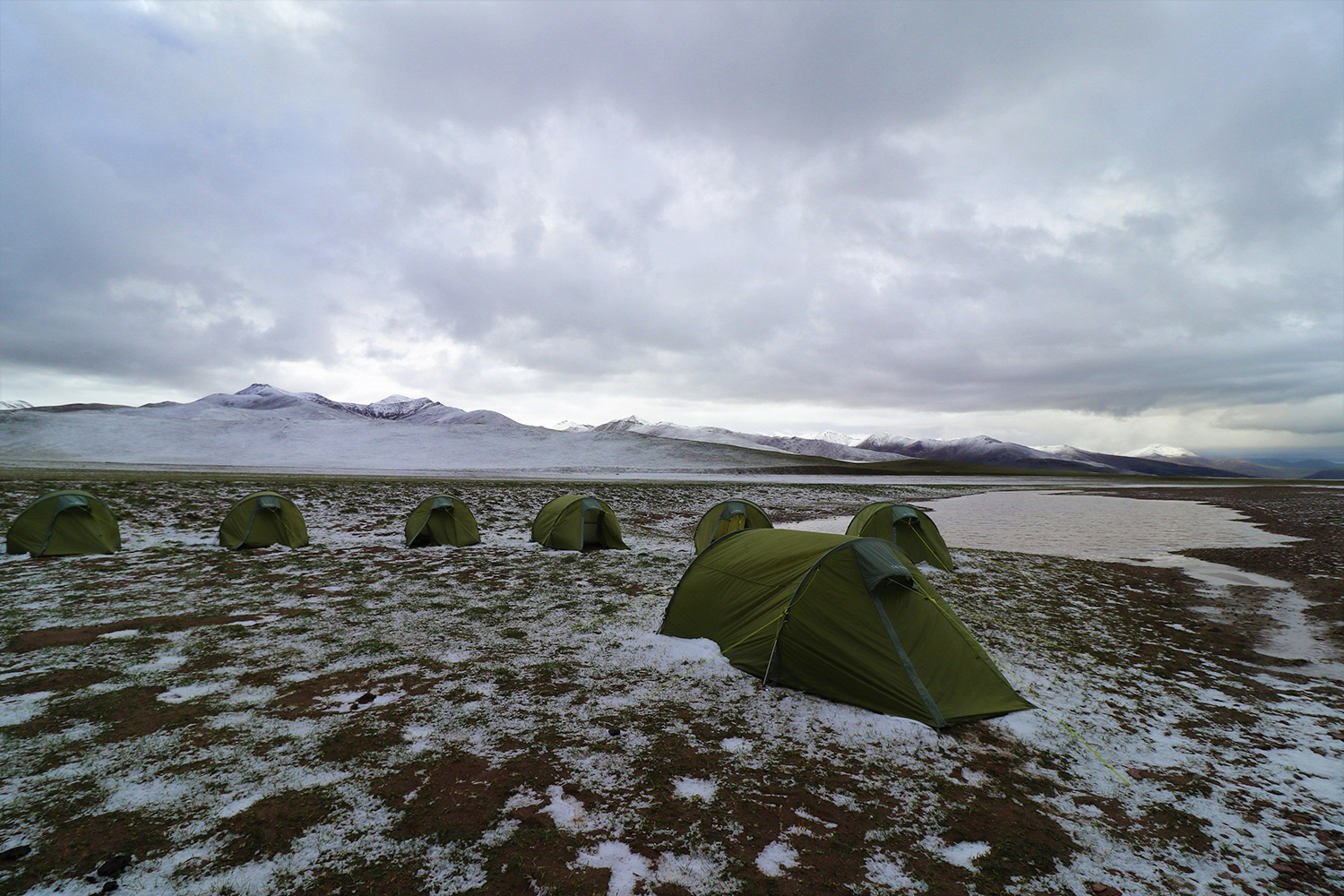Out and about on Heaven Lake Logbook TransTiP - Part 6: Sediment drilling amidst hail and tornadoes
Thunderstorms, hailstorms, tornadoes – the weather at Nam Co in the Tibetan highlands is tough. Nonetheless, the scientists of the international DFG Research Training Group TransTiP were able to pull the first sediment cores out of the lake. Additionally, Dr. Nicole Börner, Kim J. Krahn and Alexandra Müller from the Institute of Geosystems and Bioindication report a prominent visitor at the research station.

Improvised lounge and kitchen in the tent camp on the banks of Nam Co. Photo credits: Kim J. Krahn/TU Braunschweig
“We continued our trip to our camp on the south shore of Nam Co with the sailors. The tents and boats as well as the equipment could still be set up in reasonably dry weather. At the latest in the evening everyone cuddled up, shivering under a tarpaulin stretched between two cars in our improvised camp. At 5 °C we enjoyed a hot instant noodle soup and tea. The night then became even more exciting with lightning, thunder and hailstorms. The next morning we were greeted by a white wonder landscape with impressive snow-capped peaks in the background.
Pushing Physical Limits
To our luck – or bad luck – the weather at Nam Co is constantly changing. In spite of the icy temperatures in the morning we could enjoy the sunshine on the boat at the latest in the afternoon and pull out sediment cores and carry out measurements in a relatively calm sea. PhD student Paula Echeverría Galindo and PhD student Wengang Kang as well as PostDoc Sten Anslan want to have a look at microfossils and DNA in the superimposed lake sediments back in Germany to reconstruct the environmental history of the lake and its surroundings later. The longer the core, the further one can look into the past. From the boat, the drilling equipment is “hammered” in order to drive it further into the lake bed. It is an extremely strenuous work that pushes you to your limits. Luckily, we were enough people to take turns with the hammering.

The first sediment drill core of the day was successfully pulled. It was an arduous task that pushed everyone to their physical limits. Picture credits: Kim J. Krahn/TU Braunschweig
The work on the lake is not completely safe and you should always keep an eye on your surroundings. At the latest when the horizon darkens, you have to retreat as soon as possible and go back to the safe shore. Sudden thunderstorms and even tornadoes are not uncommon and can be fatal if you are not careful.

A tornado on the Nam Co. Fortunately it was still a bit away and nothing happened to anyone. Picture credits: Dr. Nicole Börner/TU Braunschweig
Prominent visit at the research station
The Minister for Science and Technology Wang Zhigang, who visited Nam Co and the station during our stay, also caused great excitement. He informed himself about the research work on site and future plans. The focus was on the planned International Continental Scientific Drilling Program with the aim to extract an 800-meter-long core that could extend up to 1 million years into the past. We even had the honor of meeting the minister personally and talking about the international diversity of researchers at the station.
In our next article, we will report on the further research work of our doctoral students.”
Text: Dr. Nicole Börner, Kim J. Krahn, Alexandra Müller

